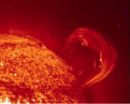(Press-News.org) PHILADELPHIA — Being a current smoker or having a history of smoking significantly increased the risk of breast cancer progression and overall death among a group of multiethnic women with breast cancer, according to the results of a large prospective cohort study.
"We found that women who are current smokers or have history of smoking had a 39 percent higher rate of dying from breast cancer, even after we took into account a wide array of known prognostic factors including clinical, socioeconomic and behavioral factors," said Dejana Braithwaite, Ph.D, assistant professor, division of cancer epidemiology, department of epidemiology and biostatistics at the University of California, San Francisco.
Researchers presented these results at the Ninth Annual AACR Frontiers in Cancer Prevention Research Conference, held Nov. 7-10, 2010.
Although smoking is associated with lung cancer and implicated in several other cancers, it is unclear what effect smoking has on breast cancer, according to Braithwaite.
"Specifically, it is unclear how long women live following breast cancer diagnosis and whether smoking increases the risk of death because of breast cancer progression or whether there is an association between smoking and life expectancy following breast cancer diagnosis that works through affecting non-breast cancer causes of death," she said.
Therefore, Braithwaite and colleagues set out to examine the relationship between smoking and the risk of death due to breast cancer progression or non-breast cancer causes of death in a large group of women.
They enrolled 2,265 multi-ethnic women diagnosed with breast cancer between 1997 and 2000. The women were followed for an average of nine years. Researchers examined whether smoking affected death from breast cancer, non-breast cancer related causes and death from all causes.
Results showed that 164 deaths from breast cancer and 120 deaths from non-breast cancer causes occurred during follow-up.
Those women who had a history of smoking or who were current smokers also had a twofold increased risk for dying from non-breast cancer related causes compared with women with breast cancer who had never smoked.
An analysis was also conducted to examine whether body mass index, molecular breast cancer subtype or menopausal status modified risk. Women who were current or past smokers and also had a HER2-negative tumor subtype had a 61 percent increased risk for breast cancer death compared with those who never smoked. Smokers with a body mass index less than 25 kg/m2 had an 83 percent increased risk for breast cancer death, and postmenopausal women had a 47 percent increased risk for breast cancer death compared with those who never smoked.
"The implication of this research is that it is important for physicians to improve smoking cessation efforts, especially among women newly diagnosed with breast cancer, in order to improve breast cancer specific outcomes and overall health outcomes," Braithwaite said.
###
Download interviews with cancer researchers and recordings of teleconferences by subscribing to the AACR Scientific Podcasts via iTunes (http://www.aacr.org/itunes) or an RSS Reader (http://www.aacr.org/rss).
Follow the AACR on Twitter: @AACR #AACR
Follow the AACR on Facebook: http://www.facebook.com/aacr.org
The mission of the American Association for Cancer Research is to prevent and cure cancer. Founded in 1907, the AACR is the world's oldest and largest professional organization dedicated to advancing cancer research. The membership includes 32,000 basic, translational and clinical researchers; health care professionals; and cancer survivors and advocates in the United States and more than 90 other countries. The AACR marshals the full spectrum of expertise from the cancer community to accelerate progress in the prevention, diagnosis and treatment of cancer through high-quality scientific and educational programs. It funds innovative, meritorious research grants, research fellowships and career development awards. The AACR Annual Meeting attracts more than 18,000 participants who share the latest discoveries and developments in the field. Special conferences throughout the year present novel data across a wide variety of topics in cancer research, treatment and patient care. Including Cancer Discovery, the AACR publishes seven major peer-reviewed journals: Cancer Research; Clinical Cancer Research; Molecular Cancer Therapeutics; Molecular Cancer Research; Cancer Epidemiology, Biomarkers & Prevention; and Cancer Prevention Research. AACR journals represented 20 percent of the market share of total citations in 2009. The AACR also publishes CR, a magazine for cancer survivors and their families, patient advocates, physicians and scientists.
END
PHILADELPHIA — Obesity was not associated with breast cancer risk in Mexican-American women, even when measured at numerous ages throughout a woman's lifetime, according to data presented at the Ninth Annual AACR Frontiers in Cancer Prevention Research Conference, held here Nov. 7-10, 2010.
However, data did show that weight gain during adulthood seemed to reduce breast cancer risk, regardless of menopausal status.
"We found that for every 5 kg of weight gain there was a significant 8 percent decrease in the risk for breast cancer," said Krystal Sexton, Ph.D., a ...
The second wave of the pandemic (H1N1) was substantially greater than the first with 4.8 times more hospital admissions, 4.6 times more deaths and 4 times more ICU cases, according to a study published in CMAJ (Canadian Medical Association Journal) (pre-embargo link only) http://www.cmaj.ca/embargo/cmaj100746.pdf. However, because of the larger number of people hospitalized during the second wave compared to the first, the percentage of people with severe outcomes was smaller.
The researchers compared demographic and clinical characteristics as well as outcomes of patients ...
Health Canada's cancellation of plans to renew tobacco warning labels on cigarette packages may lead to increased smoking rates and smoking-related illnesses and deaths, states an editorial in CMAJ (Canadian Medical Association Journal) (pre-embargo link only) http://www.cmaj.ca/embargo/cmaj101583.pdf.
Ten years ago, Canada was a leader in warning labels and other effective tobacco policies. Abandoning this labeling policy may be a set back for efforts in Canada, particularly as labels are now the government's only remaining mass communication initiative warning of the ...
The findings are based on comparisons of virtual imprints of the developing brain and surrounding structures (known as endocasts) derived from the skulls of modern and fossilized humans, including that of a newborn Neanderthal.
Philipp Gunz of the Max Planck Institute for Evolutionary Anthropology explained that the differences researchers observe in early brain development likely reflect changes in the underlying brain circuitry. It is that internal organization of the brain that matters most for cognitive ability.
"In modern humans, the connections between diverse ...
###
These new findings will be presented in three invited talks at the American Physical Society, Division of Plasma Physics 52nd annual meeting on November 8-12 in Chicago. END ...
Researchers at the Princeton Plasma Physics Laboratory have successfully used Coaxial Helicity Injection (CHI) to generate plasma current and couple it to a conventional current generation method at the National Spherical Torus Experiment (NSTX) fusion experiment. After coupling, the combined process generated 1 million amperes of current using 40 percent less energy than needed to generate this current using the conventional means by itself, thus demonstrating that a high-quality initial magnetic configuration was produced by CHI.
Plasma confinement devices based on ...
Fusion plasmas in the laboratory typically reach 100 million degrees. These high temperatures are required to ignite the hydrogen plasma and maintain the fusion burn by the production of high-energy alpha particles. One challenge for a fusion reactor is how to contain the alpha particles in the vessel long enough for the particles to efficiently heat the hydrogen plasma. One way that these alpha particles can escape the fusion chamber prematurely is by exciting high frequency Alfvén waves and riding these waves to the vessel walls, like a surfer rides a wave to the beach.
While ...
When physicists probe the mysteries of plasma, the fourth state of matter, they often discover phenomena of striking beauty. Much as when the Hubble Space Telescope sent back vivid images from space of ionized gas clouds (an interstellar plasma!), new 3D images of shear Alfvén waves are delighting both scientists and a new generation of science enthusiasts.
Plasmas support a large variety of waves. Some of these are familiar, such as light and sound waves, but a great many exist nowhere else. One of the fundamental waves in magnetized plasma is the shear Alfvén wave, ...
Just like an electrical switch allows the flow of electricity into electrical circuits, relativistic transparency in plasma can act like a fast optical switch allowing the flow of light through otherwise opaque plasma. Modern day lasers, such as the Trident laser in Los Alamos National Laboratory delivers a 200 terawatt power pulse (roughly 400 times the average electrical consumption of the United States) in half a trillionth of a second (picosecond) time. As shown in Fig. 1, when the laser power reaches a threshold limit, relativistic transparency in plasma turns the ...
The Sun sporadically expels trillions of tons of million-degree hydrogen gas in explosions called coronal mass ejections (CMEs). Such clouds—an example is shown in Figure 1a—are enormous in size (spanning millions of miles) and are made up of magnetized plasma gases, so hot that hydrogen atoms are ionized. CMEs are rapidly accelerated by magnetic forces to speeds of hundreds of kilometers per second to upwards of 2,000 kilometers per second in several tens of minutes. CMEs are closely related to solar flares and, when they impinge on the Earth, can trigger spectacular auroral ...

